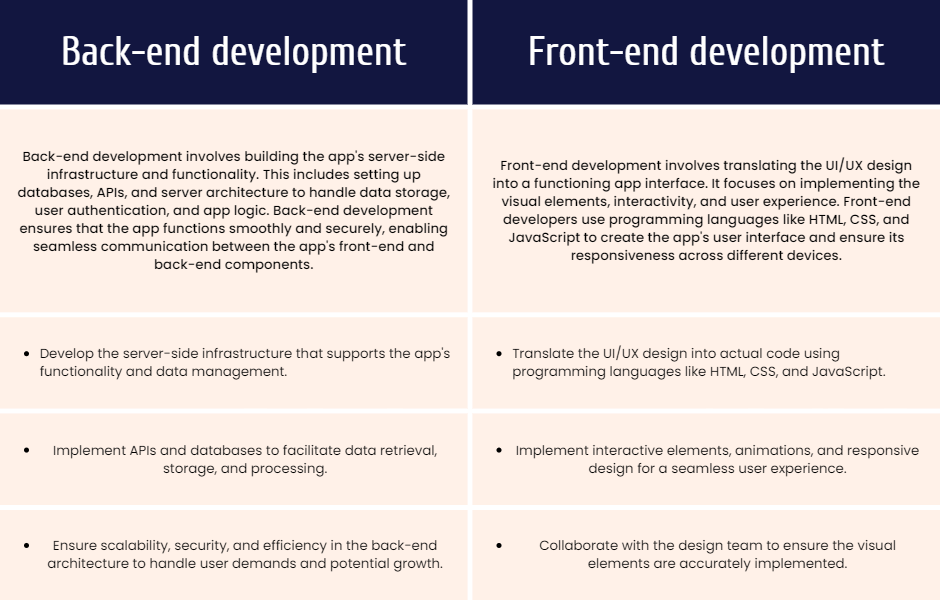“From Idea to Reality: The Process of Mobile App Development”
Introduction
Mobile app development has become increasingly significant in today’s digital landscape. With the growing popularity of smartphones and the increasing reliance on mobile devices, businesses and individuals are recognizing the immense potential of mobile apps to engage users, boost productivity, and drive revenue.
Ideation
Generating and refining an app idea is a crucial first step in the development process. This involves brainstorming concepts, identifying problems to solve or needs to fulfill, and considering the feasibility and marketability of the idea. It’s essential to focus on uniqueness, user value, and potential scalability while refining the concept.
Market research
Thorough market research is vital to understand the target audience and the competitive landscape. This includes analyzing user demographics, preferences, and behaviors, as well as studying existing apps in the same niche. By identifying gaps in the market and gaining insights into user expectations, you can fine-tune your app idea and differentiate it from competitors.
Wireframing and Prototyping
Wireframing involves creating a visual blueprint of your app’s layout and structure. It helps in defining the user flow and placement of elements. Prototyping goes a step further by creating interactive mock-ups that allow you to test and validate the app’s functionality and user experience before moving to development.
Share your idea or requirement with our experts.
UI/UX design
User interface (UI) design focuses on the visual elements of the app, including colors, typography, and icons, to create an attractive and intuitive interface. User experience (UX) design focuses on enhancing the usability and overall satisfaction of users by creating a seamless and engaging interaction. Effective UI/UX design ensures that users can navigate and interact with the app effortlessly.
Back-end development
Back-end development involves building the app’s server-side infrastructure and functionality. This includes setting up databases, APIs, and server architecture to handle data storage, user authentication, and app logic. Back-end development ensures that the app functions smoothly and securely, enabling seamless communication between the app’s front-end and back-end components.
- Develop the server-side infrastructure that supports the app’s functionality and data management.
- Implement APIs and databases to facilitate data retrieval, storage, and processing.
- Ensure scalability, security, and efficiency in the back-end architecture to handle user demands and potential growth.
Front-end development
Front-end development involves translating the UI/UX design into a functioning app interface. It focuses on implementing the visual elements, interactivity, and user experience. Front-end developers use programming languages like HTML, CSS, and JavaScript to create the app’s user interface and ensure its responsiveness across different devices.
- Translate the UI/UX design into actual code using programming languages like HTML, CSS, and JavaScript.
- Implement interactive elements, animations, and responsive design for a seamless user experience.
- Collaborate with the design team to ensure the visual elements are accurately implemented.
/*! elementor - v3.11.5 - 14-03-2023 */
.elementor-widget-image{text-align:center}.elementor-widget-image a{display:inline-block}.elementor-widget-image a img[src$=".svg"]{width:48px}.elementor-widget-image img{vertical-align:middle;display:inline-block}

App Deployment
App deployment is the process of making the app available to users on app stores and platforms. This involves creating developer accounts, preparing the app for submission, adhering to the app store guidelines, and publishing the app. App deployment requires careful preparation and consideration of factors like app descriptions, keywords, screenshots, and app store optimization techniques to maximize visibility and downloads.
Post-Launch Strategies
Once the app is launched, it’s crucial to implement effective marketing strategies to increase user adoption and engagement. This includes promoting the app through various channels, such as social media, online advertising, and content marketing. Gathering user feedback through reviews and ratings is essential for understanding user preferences and identifying areas for improvement. Continuous improvement involves analyzing user data, addressing user feedback, and releasing updates to enhance the app’s functionality and user experience.
Monetization Options
There are various revenue models to consider for your app. This may include offering the app as a paid download, implementing in-app purchases for additional features or content, displaying advertisements within the app, or adopting a subscription-based model. Choosing the right monetization strategy depends on factors like the target audience, app niche, and user expectations.
Maintenance and Updates
App maintenance involves ensuring the app’s performance, security, and compatibility with new operating system versions and devices. It includes regular monitoring, bug fixing, and optimization to deliver a seamless user experience. Additionally, adding new features and functionality through periodic updates helps retain existing users and attract new ones. Ongoing maintenance and updates are vital to keep the app relevant and competitive in the market.
Emerging Trends in Mobile App Development
Stay updated with the latest technologies and frameworks that are shaping the mobile app development landscape. These may include advancements in artificial intelligence, machine learning, augmented reality, and blockchain integration. Exploring these trends can help you leverage new opportunities and deliver innovative app experiences to users.
Case Studies
Examining success stories and lessons learned from popular mobile apps provides valuable insights and inspiration. Analyzing the strategies, features, and user experiences of successful apps can help you understand what works and what doesn’t in the competitive app market. Case studies offer practical learnings that can guide you in making informed decisions throughout the app development process.
Conclusion
The journey from idea to a successful mobile app is an exciting and rewarding one. It requires a systematic approach, including ideation, research, design, development, testing, and deployment. By following best practices, embracing emerging trends, and continuously improving the app based on user feedback, you can increase the chances of creating a valuable and successful mobile app that meets user needs and achieves your goals.
- Mobile app development is a rewarding journey that involves ideation, research, design, development, and post-launch strategies.
- With careful planning, market research, and continuous improvement, an app idea can become a successful reality.
- Staying updated with the latest technologies and trends is crucial to deliver innovative and competitive mobile apps.


